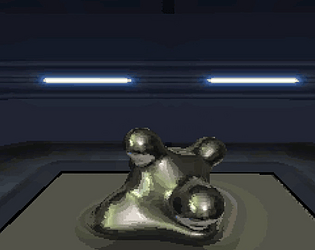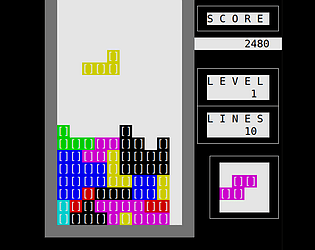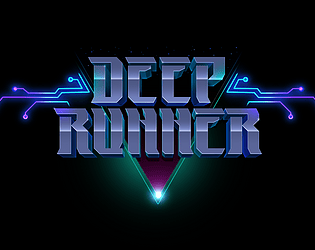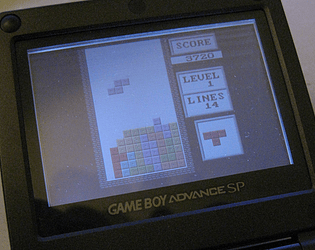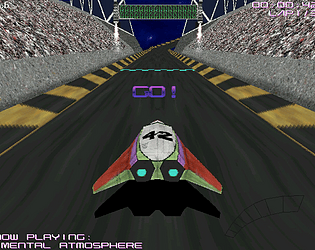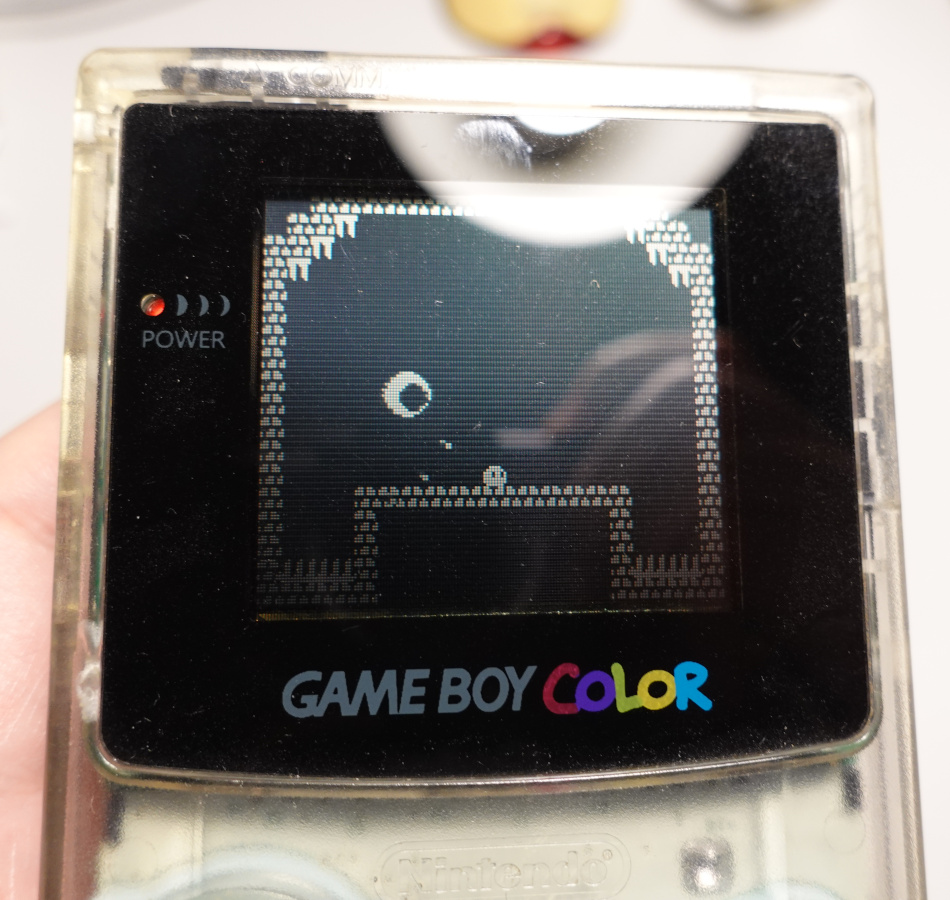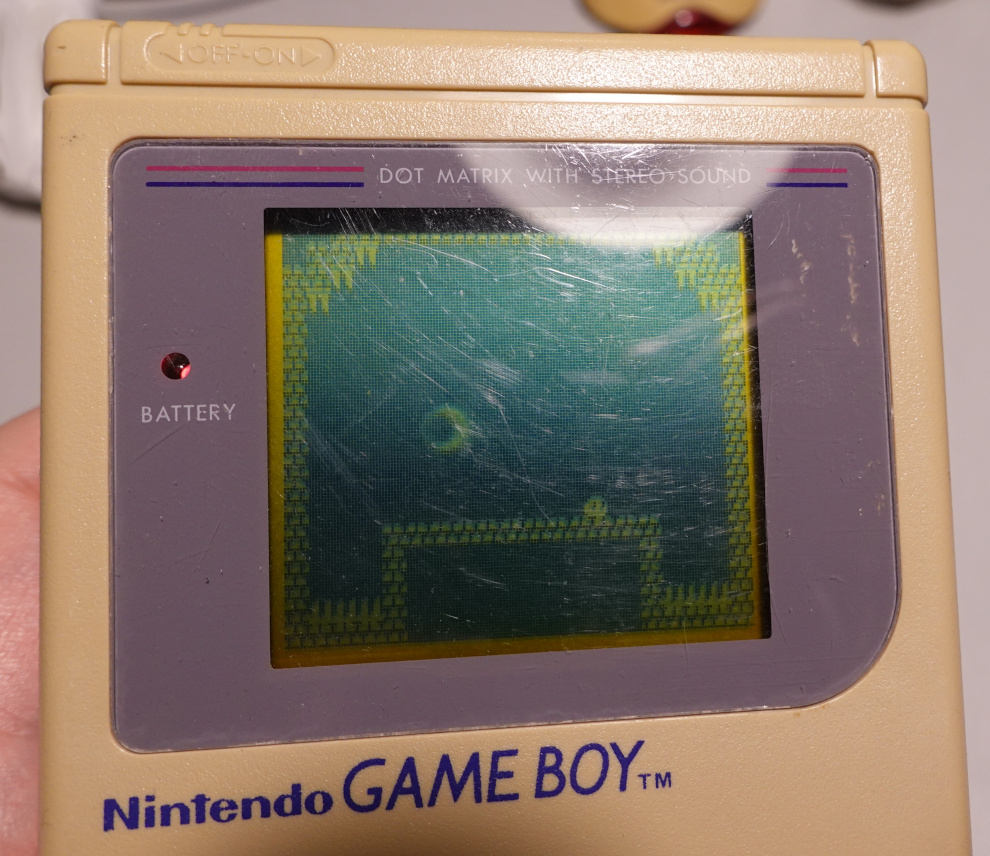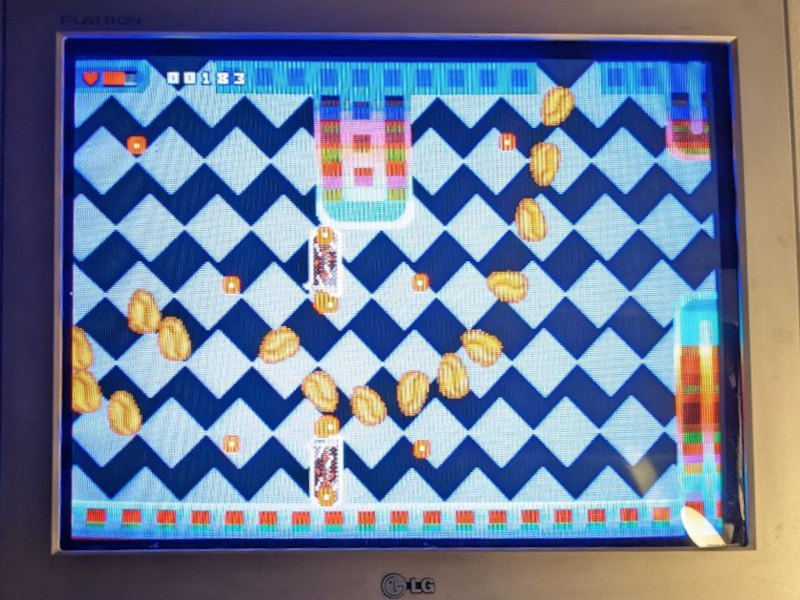Very entertaining puzzle game, and beautiful pixel art. I’m sure this kind of game exists, but I haven’t played it before, so I was thoroughly absorbed playing this on the 486. I think it would benefit a lot from mouse control.
nuclear
Creator of
Recent community posts
Really nice and crisp. I don’t know how to solve the rubic’s cube, so I just played around turning a few random faces for a while. Runs very well on my 486.
The only criticism I have is that the cube starts rotating with the slightest touch and I can’t make it stay put to grab the face I want to grab without rushing to catch it.
This is probably a remake of some known old puzzle game, but I’ve never played it and I’m not sure I got it. Is the goal to maneuver for as long as possible, to make the robots take themselves out, and then teleport and repeat? Are the door and terminal tiles on the periphery just decoration? They don’t seem to do anything.
The colors are terrible, but we all know that, for CGA it’s part of the course :) Maybe one of the alternate palette would look nicer?
This looks fantastic. Evokes a bit of fade to black to me.
I don’t think the minimum requirement should be 386 with 486 recommended though. I tried it on a 486 DX/2 80MHz with a fast cirrus logic VLB, and it’s going at around 9-11 fps in fill mode. Wireframe mode takes it up to around 20fps. With an ISA card (trident TVGA9000i) it remains solidly in single-digit framerates (7-9). On my Pentium 166MMX with an S3 Virge PCI card it manages a much more pleasant 25-30fps.
Pretty much every PC in 2023 is still an IBM PC… well most of them at least that haven’t dropped the “legacy BIOS boot” option for “UEFI-only”.
You can install FreeDOS on any PC which supports legacy boot (or boot FreeDOS from USB). The hardware is still compatible, the processor still starts in 16bit real mode, all the IBM PC I/O devices are hardware-emulated by your chipset; timers, keyboard controllers, DMA controlers, interrupt controllers. And your nvidia/AMD/intel graphics card is still compatible at a hardware level with the original VGA, and provide VESA BIOS extensions calls for SVGA modes.
The only thing which isn’t compatible at the hardware level any more with 90s PC hardware, are sound cards. So you can’t test soundblaster code on modern hardware. But everything else should work fine.
Thank you very much, even though as you said, many elements of this were rushed and unpolished, I am proud of the “engine” code I wrote for this game. Not so much the gameplay code, which was tacked on at the end.
Indeed it’s a very expensive 1996 SGI workstation, but the O2 was a low-end SGI product, so I’d put it at most in parity with a high-end ‘98 PC. I intend to port this game to 3dfx glide at some point and do direct comparisons with voodoo cards, but I suspect even the voodoo2 might have better texture mapping performance, even though it comes with severe feature limitations over what SGI’s OpenGL implementation supported. And yes it is written entirely in C and OpenGL.
I can’t answer about the textures, but I think dstar’s notion was that you’re entering a sci-fi complex through some natural caverns and old entryways. The true reason for it of course is to give some visual variation to the level.
The sound lag you mentioned is an unfortunate bug that only appears on windows. The SGI and GNU/Linux versions do not have that, so I only noticed it at the very end of the jam when I tested the windows build just before submitting it. I suspect the issue is in the mikmod library which I’m using for cross-platform music and sound playback, but I haven’t had the time to dig into it yet and see if I can fix it.
Most of the crashes are there because during the rush of the last 10 minutes before the deadline when I was trying to build across all platforms and submit the game, I left in some extra floating point exceptions enabled which I had enabled for debugging. I essentially released a debug build. Sorry for that :) Of course they are still bugs on my end, but they would result in probably imperceptible glitches here and there instead of crashes if I remembered to remove them for the final build.
Thanks for the feedback, and for taking the time to report the issues you encountered!
Exactly! SGI machines were like the unobtainable holy grail for poor graphics programmers like me stuck on DOS PCs. It was “professional gear”, big league stuff … which is why I became obsessed about collecting them later in life :) And why it also seems almost absurd to use them as a game platform, I like the irony in that :)
And yes absolutely I was always getting disoriented and couldn’t play much of descent at the time, and I never liked fast action games very much anyway… but mechanically this freedom of movement makes it very interesting as a programming exercise :)
As for the level visuals, all the credit goes to dstar who made the awesome models and textures, and designed the level from scratch.
The GBA is definitely one of my favourite hacking platforms, but I very seldom like GBA games. I don’t like zelda-like games in particular, but I must admit the GBA’s hardware is very well suited to this kind of game.
The graphics are very nice, but they look very washed out on a real GBA. I had to move the cartridge to my nintendo DS with its properly backlit screen to be able to enjoy the game properly.
You really need to saturate the hell out of everything to make it look ok on the GBA screen, and I tried having an option for that in my previous GBA game, but I also failed miserably in this, I have to admit Maybe its a lost cause and almost everyone has IPS mods nowadays anyway…
I liked the above-ground “3d” view of the environment, and I think it would look awesome if that was maintained for the dungeons below.
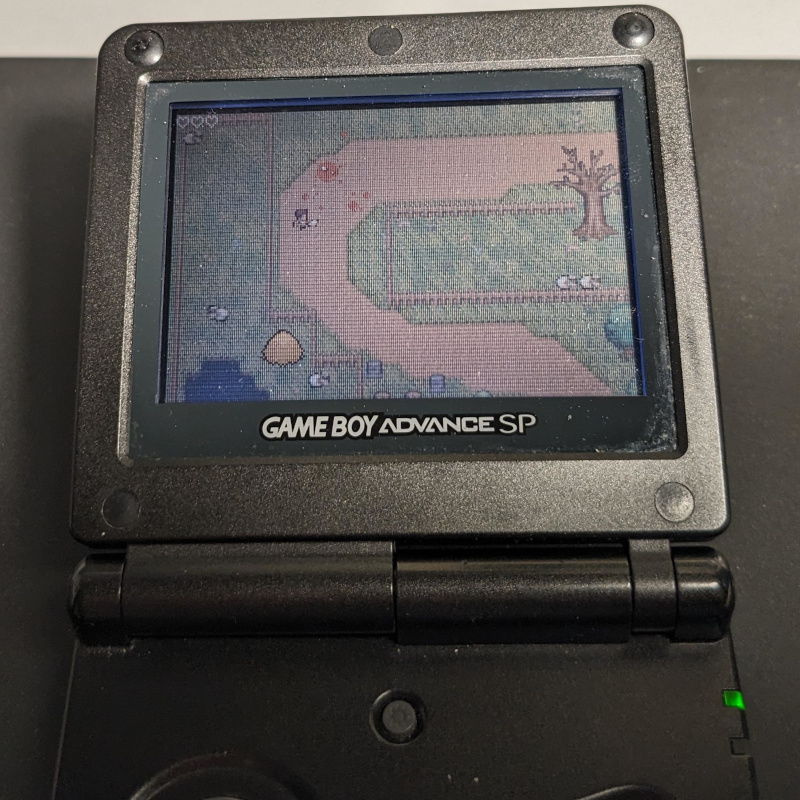
Reminds me of some old flash games. Nice time-waster, but I think the lack of feedback in the form of sound or any kind of visual effect when the balls are hit, detract from the experience. Also the controls felt unintuitive. Instead of the absolute rotation increase/decrease with the left-right direction, I would much prefer it if they were relative to the cannon. So for instance, when pointing down, left-right should be reversed, when pointing to the side, up-down should turn it accordingly. In fact at all times I would consider all directional inputs, and weigh then proportionally to where the target spot is located relative to the player.
I liked how the colors match the colors of the controller buttons, but not being very familiar with the SNES and not having memorized the colors, made it a bit harder to choose the right one.
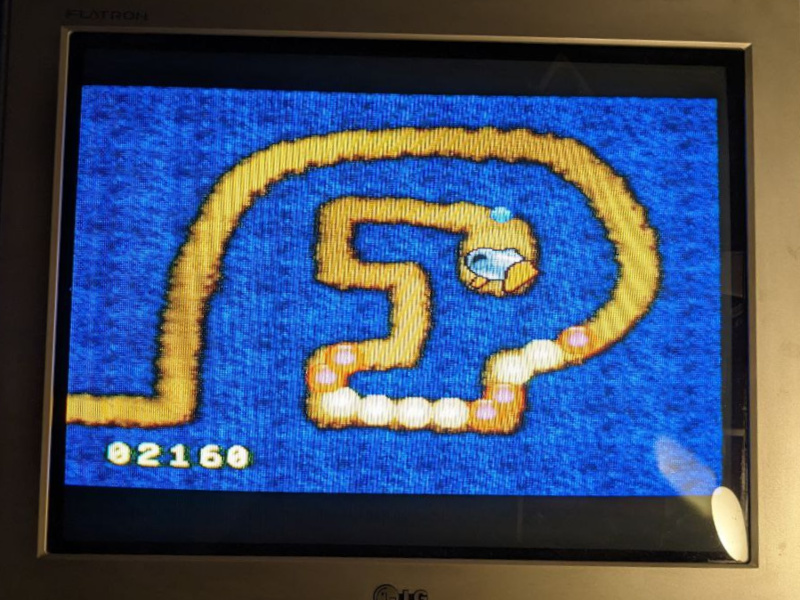
This one is definitely a cut above the rest of the megadrive entries for me. It goes for an unconventional genre for the platform, a genre which I happen to love, and oozes atmosphere in the process. I love the little touches like showing the dice rolls graphically… great job! Also the map was very much appreciated, otherwise it would be easy to get lost in the dungeons. In fact the combination of the top-down rogue/nethack map view with the later 3D dungeon crawler style is very interesting; kindof like playing two games in one.
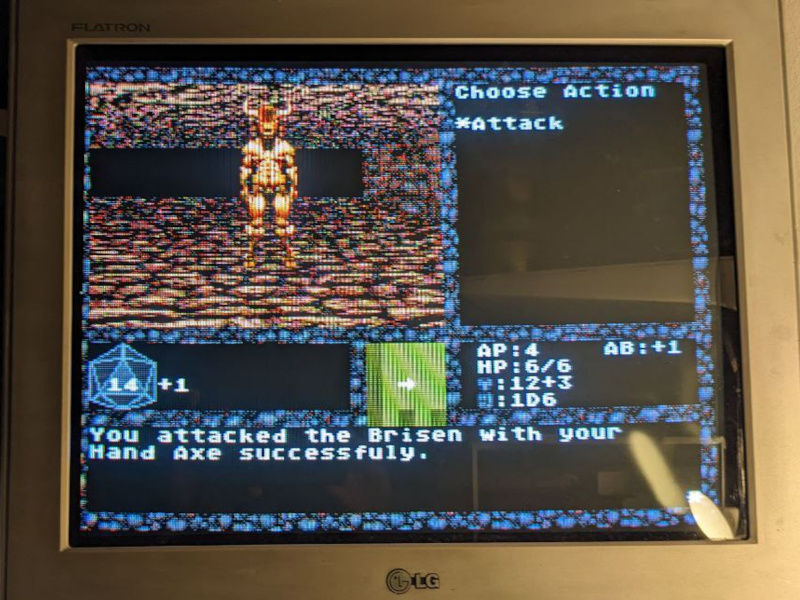
I’m not a fan of platformers, and I found the character hard to control, but that’s probably down to my inexperience with the genre. I like the ability to turn the gun and shoot in all directions, but I kept thinking it would be great if it was somehow separately controlled from movement, which I realize with the limited buttons of the megadrive is not an easy thing to do. I’d experiment with using the A B C buttons for directional firing, and use the d-pad only for moving, but it may be that would make it worse.
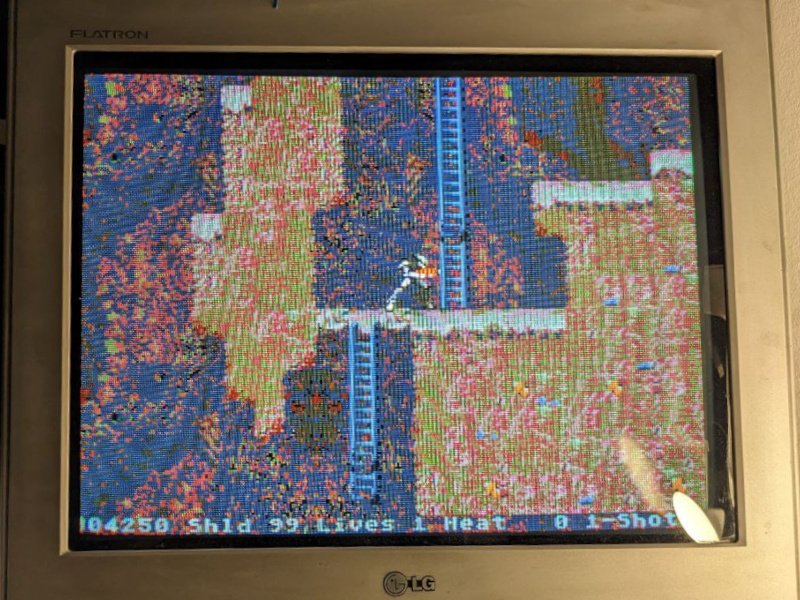
Extremely atmospheric. The controls for looking up/down are a bit awkward, and I fumbled with them a lot. Also the music and atmosphere is so relaxing I nodded to sleep a couple of times and lost due to oxygen deprivation, but that’s mainly on me for being tired while trying to play. The highlight of this entry is how it takes the 3DO to its limits. Very well done!
Nice one! I ran it on my megadrive just now. initially I got confused all the time about which button corresponds to which color, but I got used to it by the 2nd level and pressed the correct button most of the time without thinking about it. I like the later levels with crossing paths making it not immediately obvious where to shoot.

Sorry for the shitty picture, I wanted to snap a picture of it running on real hardware but I was being chased by the colorful beasts at the same time :)
ops! sorry about that… it’s a silly bug. It looks for these options under “ctl” not “controls”… rename the section to “ctl” and back-up the file, because unfortunately it will overwrite it with the wrong name again on exit…
edit: I prepared a patch for the windows version which fixes the issue. Run it in the same directory as the game executable, and it will patch it to use “ctl” everywhere. Delete your game.cfg and run the game to re-create it correctly, then edit it at will: http://nuclear.mutantstargoat.com/sw/games/deeprunner/releases/deeprunner_patch1-win32.zip
Thanks! you can change the mouse sensitivity in game.cfg (it will be created automatically first time you run the game). The option is called “mousespeed” and takes a value from 0 to 99. It’s under the “controls” section. I intended to make an in-game settings screen for all this, but couldn’t make it in time.
edit: optimus just pointed out that this won’t work. the reason is a stupid rename bug… the game looks for control settings under “ctl” not under “controls”, so it won’t find the values you put there. Rename the section to “ctl” and it will work, but unfortunately it will also over-write the config file with the wrong name again on exit, so save a backup :)
edit2: or better yet, just run this patch I prepared, which patches the windows executable and fixes the issue. run it in the same directory as the game executable, delete your game.cfg and start the game again to re-create it with the correct “ctl” section, then edit the mouse sensitivity and it will work: http://nuclear.mutantstargoat.com/sw/games/deeprunner/releases/deeprunner_patch1-win32.zip
Thanks!
Keyboard remapping was almost there, but I didn’t have the time to make the options for it. The input code does go through a mapping table though because I had remapping in mind, so future versions will definitely allow for it.
I noticed the sound lag on windows. I’ll try to fix that at some point. I’m using a 3rd party audio library (libmikmod), and I’ll have to dig into their windows backend to see what’s going wrong. The bug is windows-only. GNU/Linux and SGI IRIX play the sound effects correctly.


